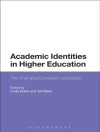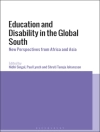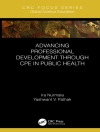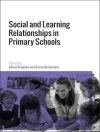Drawing on 15 months of ethnographic research in one of the most under-developed regions in the Caribbean island of Trinidad, this book describes the uses and consequences of social media for its residents. Jolynna Sinanan argues that this semi-urban town is a place in-between: somewhere city dwellers look down on and villagers look up to. The complex identity of the town is expressed through uses of social media, with significant results for understanding social media more generally.
Not elevating oneself above others is one of the core values of the town, and social media becomes a tool for social visibility; that is, the process of how social norms come to be and how they are negotiated. Carnival logic and high-impact visuality is pervasive in uses of social media, even if Carnival is not embraced by all Trinidadians in the town and results in presenting oneself and association with different groups in varying ways. The study also has surprising results in how residents are explicitly non-activist and align themselves with everyday values of maintaining good relationships in a small town, rather than espousing more worldly or cosmopolitan values.
Praise for Social Media in Trinidad
’This remarkable book is recommended for those interested in reading about social media in an accessible manner that centers on communities rather than individuals and seeks to further understanding on the subject.’
New West Indian Guide
สารบัญ
1. Introduction and field site: a town that could be anywhere
2. The social media landscape: new media and ‘old’ media
3. Visual postings: showing individuality and remaining part of a group
4. Relationships: polymedia and the family
5. Social media and social visibility: being very local and very global
6. The wider world: non-activism and the visibility of values
7. Conclusion: social media through ethnography
เกี่ยวกับผู้แต่ง
Jolynna Sinanan is Vice Chancellor’s Postdoctoral Research Fellow at RMIT University, Melbourne. From 2011-2014, she was Research Fellow in Anthropology at UCL. She is co-author How the World Changed Social Media (with eight others) and Webcam. Her areas of research are digital ethnography, new media, migration and gender in Trinidad, Australia, and Singapore.












